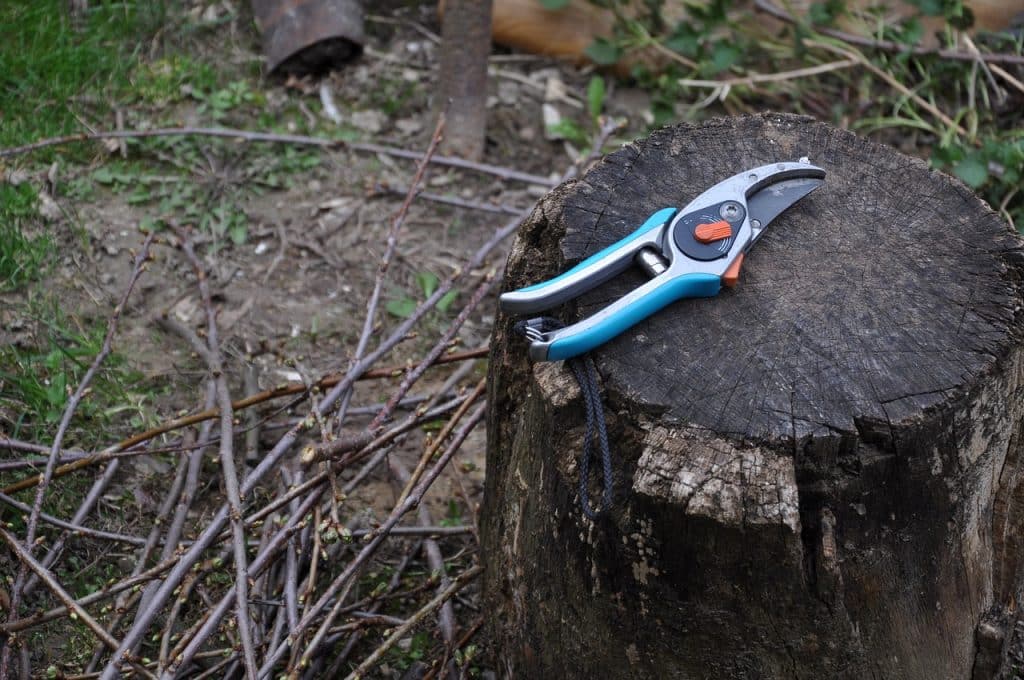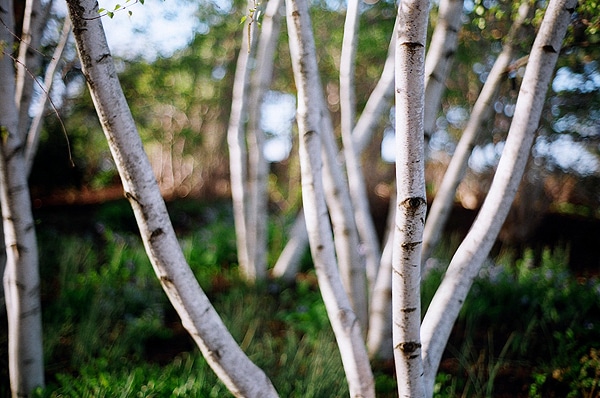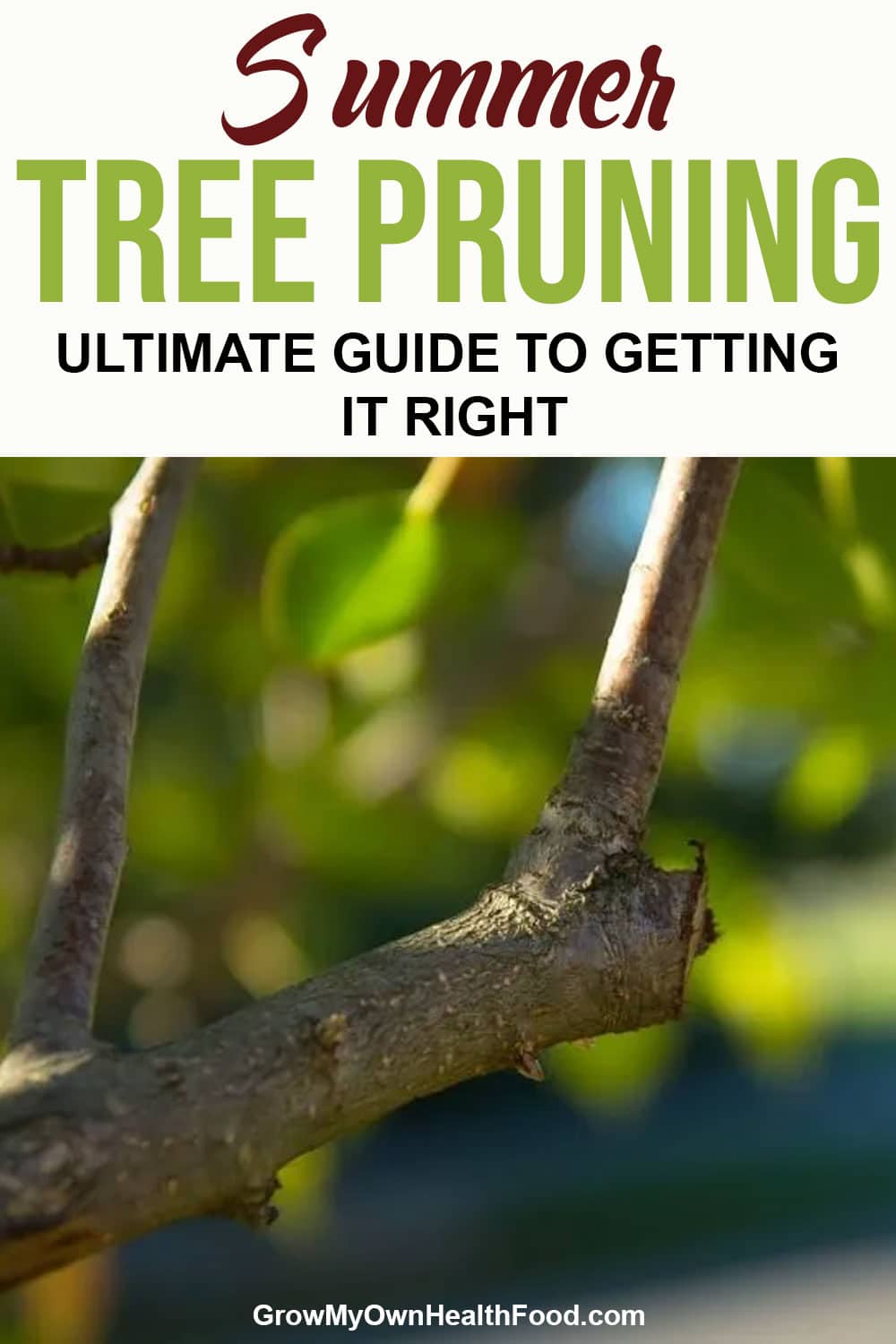No doubt you’ve seen a lot of trees, and may have even grown some on your own property. However, how much do you know about trees and their needs for pruning? There are certain things to consider when it comes to summer tree pruning, that is, if you want to get it right.
According to Washington State University Extension, tree pruning can be an art as well as a science.
The science of tree pruning entails understanding its development over time; how trees convert carbon into sugars, how lights affect their growth, how they absorb water through their roots, etc.

On the other hand, the art of tree pruning is all about pruning the tree in such a way that both its productivity and balance of growth is esthetically pleasing to you.
So, how do you rightly prune a tree?
For starters, you’ve to make sure the pruning matches the predetermined size and growth habit of the plant. Remember, the tree is a complex organism with a self-supporting system. If you remove too much of what the tree needs to sustain itself, it can lead to poor growth, overgrowth, disease and even death.

If you think a plant is too large for its space, it’s far better to remove or replace it than over-pruning them.
First step to pruning is to remove diseased foliage, dead wood, deranged branches and damaged branches. Be careful with the cuts, in order to minimize damage to the tree. Make the cleanest cut possible, just above the branch collar.

The best time to prune a tree is during its dormant season, a period when its growth and development is temporarily stopped. A lot of plants can benefit from summer tree pruning.
Some plants like dogwood, lilac, and maple can easily be pruned in hotter and drier weather, as this reduces the chance of bacterial and fungal infection. For Japanese maples specifically, you can prune out smaller branches to let in filtered light, and then carefully cut out regrowth from previous pruned cuts in order to encourage new stronger branches.
Now for plant suckers, which is common with birch, willow, magnolia, viburnum, and flowering cherry, you can start on time to remove the excess growth at intervals. A good approach is to prune out about 10 percent both in the summer and in the late winter.

Fruit Tree Pruning
For fruit trees, such as apple, pear, peach, etc., it’s advisable to allow for more sunlight and air during summer pruning. This will help improve the sweetness and size of the fruit before harvest time. Additionally, pruning of mature stone fruit trees like apricot, plum, cherry, and peach helps in reducing the risk of fungal disease, while enhancing the tree’s conversion of carbon into sugars.
The summer is also a good time to prune trees that grow flat against support. There is usually lots of growth during this period. So, you can let it more sunlight by creating nice fruit spurs close to the flat plane of the tree.
Pruning Tools
Here are few of the best tools of the trade you might consider:
Corona TP 3206 SwivelCUT Long Reach Pruner
- Head rotates, tilts and swivels for unlimited cutting positions
- Power glide comfort grip eliminates tangled ropes
- Oval end-grip with rubber over mold increases reach
- Revolutionary, lightweight tool offers an ergonomic body position and superior cutting performance at a distance with its long reach capability
- Versatile 360-degreecutting action
- Powerglide comfort grip eliminates tangled ropes
- Pruner
- No ladder, no bending, no stress
- Revolutionary, lightweight tool offers an ergonomic body position and superior cutting performance at a distance with its long reach capability
- Versatile 360-degreecutting action
- Powerglide comfort grip eliminates tangled ropes
Prices pulled from the Amazon Product Advertising API on:
Product prices and availability are accurate as of the date/time indicated and are subject to change. Any price and availability information displayed on [relevant Amazon Site(s), as applicable] at the time of purchase will apply to the purchase of this product.
To avoid climbing on a ladder, you might consider a reach pruner. Our favorite is the Corona TP 3206 long reach pruner. The head rotates, tilts & swivels for unlimited cutting positions. Power glide comfort grip eliminates tangled ropes. Oval end-grip with rubber over mold increases reach. No ladder, no bending, no stress.
TABOR TOOLS GG12A Anvil Lopper
- CHOPS THROUGH 2” BRANCHES effortlessly. This KING OF LOPPERS will allow for fast removal of dry and woody growth and is the ideal tool for preparatory cuts and cut-to-length work. The lopper is designed and built for professional grade applications and makes cutting dramatically easy through extra leverage and compound action power!
- SHARP HARDENED CARBON STEEL BLADE will stay sharp, even after some heavy use! The low-friction non-stick coated gliding blade make every cut a joyful experience. The tools is easy to use, even for the elderly gardener or if you have arthritic wrists. There’s no cut you can’t make with this KNIGHTS BLADE! Replacement cutting blades available.
- COMFORT GRIP AND EXTRA LEVERAGE. The rubberized grips on the 22 handles provide comfort and good grip. This longer 30” model will allow you to work with some extra strength and leverage and to efficiently navigate around higher limbs. The ergonomically handles are designed for optimal grip to ease the cutting of any branch.
- COMPOUND ACTION SYSTEM: The compound lever system with multiple pivot points and moving parts increases the force applied to the blades. The compound action blade has multiple moving parts which multiplies the force applied to the blades 3 times!
- ORDER WITH CONFIDENCE. We at TABOR TOOLS stand behind our products. Please don’t hesitate to contact us for support, questions about our products or spare parts you might ne
Prices pulled from the Amazon Product Advertising API on:
Product prices and availability are accurate as of the date/time indicated and are subject to change. Any price and availability information displayed on [relevant Amazon Site(s), as applicable] at the time of purchase will apply to the purchase of this product.
For those branches you can reach from the ground we like the TABOR TOOLS GG12A Anvil Lopper with Compound Action. Chops through 2” BRANCHES effortlessly. This longer 30” model will allow you to work with some extra strength and leverage and to efficiently navigate around higher limbs.
Corona RazorTOOTH Folding Pruning Saw, 10 Inch Curved Blade
- 3 SIDED RAZOR TEETH FOR EFFICIENT CUTTING: 10 blade is ideal for cutting 5 - 6 diameter, small to medium, branches
- ERGONOMICALLY DESIGNED, COMFORTABLE, CO-MOLDED HANDLE: Provides a comfortable grip for extended use
- EASY TO LATCH BLADE PREVENTS INJURY WHEN NOT IN USE: Folding blade is curved, taper-ground, and replaceable
- IMPULSE HARDENED TEETH FOR LONG SERVICE LIFE: Extends the life of the tool season after season
- UP TO 6 TEETH PER INCH AND CURVED BLADE DESIGN FOR FASTER CUTTING: Cuts are smoother and quicker than a traditional s
Prices pulled from the Amazon Product Advertising API on:
Product prices and availability are accurate as of the date/time indicated and are subject to change. Any price and availability information displayed on [relevant Amazon Site(s), as applicable] at the time of purchase will apply to the purchase of this product.
For sawing through 2″ plus limbs we recommend the Corona RazorTOOTH Folding Pruning Saw, 10 Inch Curved Blade. 3 sided razor teeth make for efficient cutting. An ergonomically designed, co-molded handle provides a comfortable grip for extended use.
Should I use a Pruning Sealer?
Most of what we’ve read suggests not to use a pruning sealer. I have to admit I used them in the past. However, after reading this study I stopped. Let us know what you think.
Conclusion
That’s just about it on how to rightly prune a tree in the summer. It doesn’t only apply in the summer, but also at any other time of the year. The purpose is to improve air circulation and sunlight to the center of the plant at all times.







